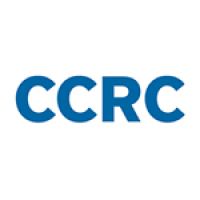By Susan Bickerstaff, Daniel Sparks, Selena Cho, and John Fink
The steady drumbeat of reporting and commentary on the dire state of the humanities in higher education continues, with a host of factors identified as contributing to a decline in students majoring in humanities: dwindling state appropriations for higher education, the rise of AI, and an increasing emphasis on career preparation, particularly in STEM fields. The role that community colleges might play in helping to put students on the path toward the study of humanities has been largely overlooked in these discussions. To help fill the gap, a new CCRC report identifies ways that community colleges can strengthen pathways to transfer in humanities fields.
The Strengthening MiHumanities initiative, led by the Michigan Community College Association, was designed to explore the landscape of humanities in Michigan’s community colleges and improve transfer in the state. The initiative convened faculty to build stronger pathways and improve student engagement in four disciplines: communication, English, history, and theater. To support this work, CCRC analyzed administrative data from the state of Michigan and conducted interviews and focus groups with humanities faculty, administrators, advisors, and students at two- and four-year institutions.
Findings from CCRC’s research reveal a promising opportunity: The number of students taking humanities courses at community colleges in Michigan has been increasing, and 55% of bachelor’s degree earners in humanities fields in Michigan began at a community college. Yet, our study points to room for improvement: Among transfer students who completed associate and bachelor’s degrees, only 5% did so in a humanities discipline compared to a combined 40% for business and health. Looking at all students who start at a community college, only 2% go on to earn a bachelor’s degree in a humanities field within six years.
Community college students represent vast sources of talent and bring valuable diverse experiences by virtue of their age, race, and backgrounds. How might community colleges strengthen their humanities offerings, and working with their four-year partners, better propel more of their students to successful transfer in the humanities?
Structuring Degree Programs to Invite Students into the Humanities
One opportunity lies in the structure of their degree programs. At many community colleges, students aspiring to transfer to a four-year college in a humanities major are advised to enroll in a general studies or liberal arts associate program. These programs account for nearly half of associate degrees awarded and enroll students interested in many different fields, as well as those who are undecided. This means that students encounter a patchwork of courses that do not constitute a coherent learning experience in the humanities, and faculty and administrators have no formal mechanism to identify students’ interests in order to provide field-specific support or resources. By contrast, when colleges develop field-specific degree programs or even concentrations or pre-majors within the liberal arts or general studies degree, we see new opportunities to recruit students into humanities fields, to identify and track students with an interest in the humanities, and to improve students’ college experience by connecting them with a smaller and more meaningful academic community of peers and faculty. When these programs lead to junior standing in a major at a regional transfer partner, their value is easier to articulate to students.
Making Connections to Careers
Experiential and applied learning experiences can engender student interest, provide opportunities for career exploration, and help students see the relevance of the humanities. In our report we highlight how faculty members and administrators at Washtenaw Community College, Lake Michigan College, Schoolcraft College, and Grand Rapids Community College are embedding enriching co-curricular experiences into students’ courses and showing connections between the humanities and a range of professions. Community college students, many of whom are working full-time, may especially benefit from opportunities for research and experiential learning within their courses. But our findings suggest that students, families, academic advisors, and college administrators could use a clearer understanding of the ways that the study of the humanities can lead to economically stable and fulfilling careers.
A Role for States, Disciplinary Societies, and Intermediaries
To build academic communities and transfer pathways for aspiring humanities majors and to create meaningful course-based learning experiences requires time and resources that are unfortunately in short supply, in part due to longstanding disinvestment in postsecondary humanities education. In disciplines like theater, history, languages, religion, and philosophy, many community colleges employ few or no full-time faculty members, making the recommendations above difficult to implement. Thus, our report highlights the role that states, disciplinary societies, and other intermediaries can play in providing support to community colleges and their faculty to strengthen on-ramps to humanities study. These include creating opportunities for faculty from two- and four-year institutions to convene within disciplines to share curriculum and strengthen articulation, compile information on career opportunities and earnings of humanities graduates, and identify local organizations and businesses seeking graduates with the skills gained through humanities study.
The erosion of humanities education is a threat to the skills and dispositions it fosters—creativity, civic engagement, empathy, ethics, and an understanding of the role that culture and context play in shaping our experiences. Community colleges have the potential to attract a large and diverse population of students to the humanities, but to do so will require investments to create pathways and learning experiences that foreground the opportunities and the value of humanities study.





